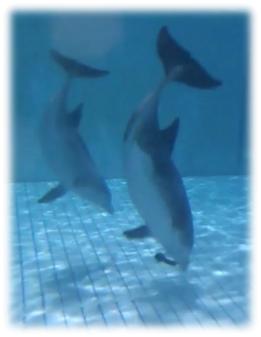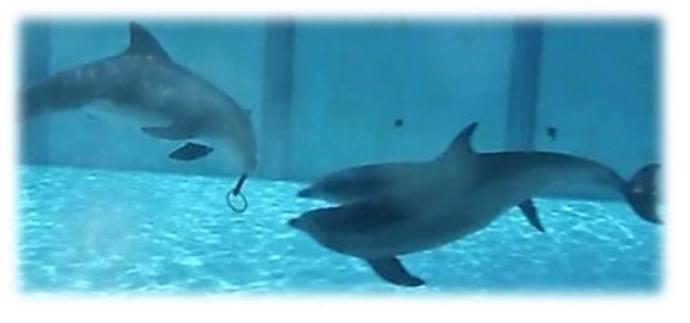Conclusions

There is much to have in mind when forming conclusions. For this project, echolocation use was the most problematic one to form. As no hydrophones could be used in combination with this type of enrichment, behavioural sampling and angles were thought to answer whether a dolphin was likely or not to use sonar to find out about a fish hides content. The data for this information was proven to be very complex, as many factors played a role in dolphins’ actions. The data has been collected, and at some point, it might give interesting suggestions about what the dolphins acted upon while choosing fish hides to interact with, but till then conclusions had to be drawn based on other analysed data. However, laboratorial tests are being made on Target Strengths on the fish hides, which might give us a more complete picture of what the dolphins were up against in terms of echolocation challanges.
My conclusions for the project:
- Interest was individually dependent
- Some interacted a lot and seemed to be enriched by the addition
- Some dolphins were more interested in each other or other factors
- Echolocation was most likely used towards the fish hides, as they represent an interesting object, but less likely used for detecting fish hides content.
- Peach, who expressed a playful behaviour towards fish during the 25 % sessions was likely to enjoy the difficult sessions as well
- Activity before sessions had insignificant effect on interest level
- Enrichment might be used at any time
- The level of interest is likely to stay in about the same level as during the first interactions
- Interest is likely to be maintained
- Interacting with the enrichment is correlated with an active swim pattern, which is good for welfare
- Fish with a higher Target Strength would possibly have enabled dolphins to learn from the start and should be used in the future

Responsible for this page:
Director of undergraduate studies Biology
Last updated:
05/29/18
